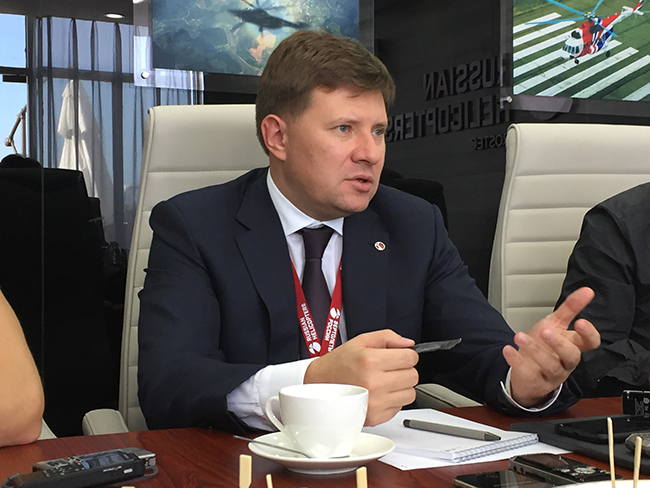
- Andrey Ivanovich, it is already possible to sum up the preliminary results of the year. How many helicopters will be delivered to customers in 2018 and what are your plans for 2019?
- We will supply approximately the same number of helicopters as last year. In 2018, the number of civilian helicopters is increasing, there will be about 75 of them. Revenue and profit figures are also comparable to those of last year. I’ll not say the exact figures now, because the final figures still affect the accounting indicators, such as reservations, dependence on the assessment of auditors, etc. While I can operate with data management reports, and what will be in the accounting, we will look at next year.
Plans for the next year have already been confirmed by 90% firm orders. If we talk about the order book, which is available for 2019-2021, it is: more than 120 military vehicles for export; Next year, we will complete the delivery of supplies under the state defence order for the long-term contracts that were signed back in 2011-2012, only contracts for the supply of Ka-52 and Mi-28 will remain; on civil issues this year we signed a contract at the air show in Gelendzhik for the supply of 104 Ansats and 46 helicopters of the Mi-8 family, of which, next year we have 60 plans for Ansat helicopters for Russian and foreign customers, plus - we expect soft orders on the basis of our demo tour on the Ansat and Mi-171A2 helicopters in Southeast Asia will be transferred to firm ones. Also, from this year, part of the fulfilment of contracts for internal and external customers is transferred to the first quarter of next year. This is mainly due to the need to make improvements to the new requirements, primarily the Ministry of Defence of the Russian Federation, based on the results of our helicopters in the Syrian People’s Republic.
If you look at the global military market, it falls. A civilian for the next 10-15 years, according to experts, will have a growth rate of 3-5% per year. This is the segment in which we were represented only by helicopters of the same class - the MI-8/17 family and we have a low starting base for civilian products. Here we need the support of the state in the person of Federal Air Transport Agency and the Ministry of Transport so that it is possible to go with these products to foreign markets. So that we have a simplified approach to certification, called Validation. We are actively working with colleagues from the Federal Air Transport Agency to validate the certificate for the Ansat helicopter in the People's Republic of China. We have completed our part of the work. The interaction between the engine manufacturer Pratt&Whitney and the Chinese aviation authorities remained as the engine is certified separately. A basic document on airworthiness between the Russian Federation and the People’s Republic of China is being prepared.
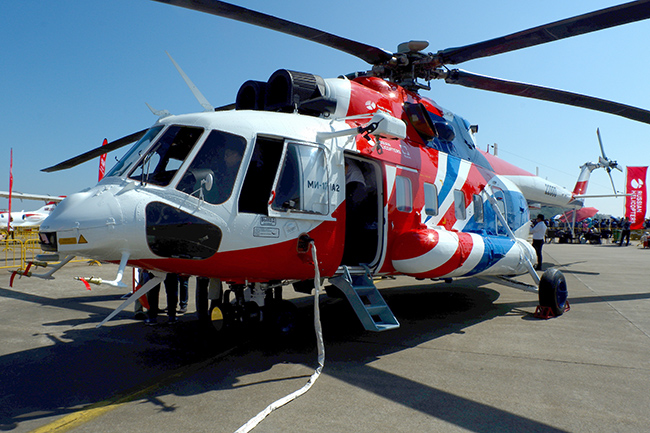
Last year, the working procedures were implemented, which allowed us to conclude a contract with Turkey for the supply of Ka-32, and which we are now implementing. The same work goes with India. In India, we start with the Mi-171A2, we have signed a contract for two cars with the company Vector Group. Also it is Mexico, Colombia, Peru, Brazil. Today we are actively looking at the African market, and the main question for today is the closure of financial risks with any buyer. The state, in the person of the Russian Export Centre, actively helps us in this. We are very actively interacting with him. We also conducted a deal with Turkey with the support of the REC.
- You mentioned the need to make some changes in the design of helicopters as a result of their use in the Syrian People's Republic. Are these design changes related to the helicopters themselves or equipment related to combat use?
- This is a normal interaction on the analysis of the results of the use of any technology in Syria, in order to develop priorities for making changes. Changes may be of a different nature. It's one thing when changes can be made fairly quickly. Another is solutions that entail large labor costs. For example, changes in the design of the helicopter, which may entail additional tests like ours and our colleagues in cooperation. In any case, we are not only waiting for all proposals from the Ministry of Defence, but also actively participating in the dialogue. Our designers go to the site, communicate with pilots and engineers, and, as a result of such communication, we perceive all comments and suggestions.
The world does not stand still, the nature of conflicts is changing, and, on this basis, changes are required, both in the tactics of application, and in that set of equipment and aviation weapons that can be applied today with the help of our machines. Therefore, we have to make this work meeting the requirements of the Ministry of Defence is divided into 3 stages: short-term, medium-term and long-term. These changes are related both to the design of the vehicles themselves, and to aviation weapons, to onboard defence complexes, to weapon control systems, to the possibility of using unified weapons on the Ka-52 and on the Mi-28 ...
- It is no secret that sales of aircraft in the world are not stable. There are peaks in demand, then saturation and decline. For example, aircraft builders manoeuvre between these peaks due to the fact that they have a wide product line, and they transfer accents in the production program from equipment for one market segment to equipment for another segment. In connection with the decline in demand for combat vehicles and the saturation of the market in the Mi-8/17 class, do you have any other models of helicopters that you could concentrate on in production and offer them to the market until it starts to recover? demand in our historical segments?
- Unlike aircraft manufacturers, as I said, we, for various reasons, haven’t paid enough attention to the civilian market previously. If you look at 3 previous years, in 2016 we sold only 16 civilian helicopters, in 2017-2018. this is 65-75 cars. A significant part of them is sold inside Russia. In this connection, one of the elements of expanding diversification will be the supply of civilian products abroad. For this, we need the opportunity and agreements between the aviation authorities of Russia and other countries on the validation of certificates so that we can enter the civil segment in which we have never been represented in these countries.
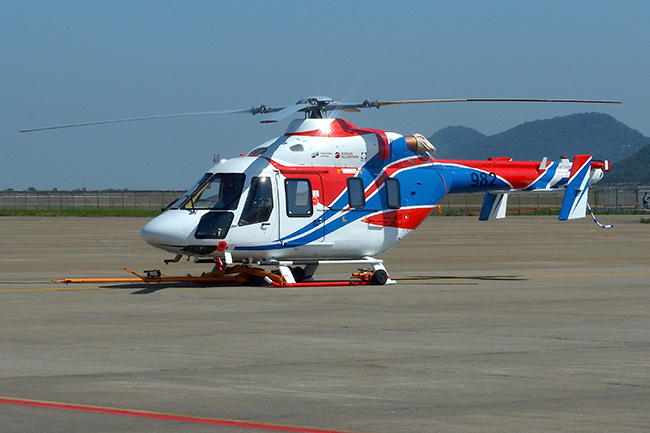
From the prospective of the model range, first of all, today we are entering the world market with the Ansat helicopter - a segment of helicopters of take-off weight of about 3.5 tons. About 100 helicopters are flying in Russia now. The raid is big. The program of the use of Ansat in air medical service shows that the vehicle is reliable, the raid on one car is at least 600 hours / year. Also, in 2018, the Ka-62 flew. We plan to show it at the MAKS-2019 air show in the flight program. With this helicopter, we are moving towards obtaining a basic certificate at the end of 2019, and we are setting up all our cooperation partners and engine suppliers for the same periods. Last year at Le Bourget, SAFRAN received an EASA certificate for its engine, which is installed on the Ka-62, and we ask French colleagues to work with Federal Air Transport Agency, in parallel with us, to validate the certificate in Russia. The same applies to transmission suppliers and other systems and components. This is in the segment of cars with take-off weight up to 7 tons.
In the segment of single-engine light helicopters - VRT-500. For now, this is just a layout. But we set ourselves the task in 2020 to demonstrate the already flying model. This market segment is a big challenge for us, and it has never been covered by us before. A helicopter can be sold both to corporate operators, in a particular version, and to individuals. The next direction - work in the field of drones. At the MAKS-2017 air show and at the St. Petersburg Economic Forum, we have already demonstrated prototypes, and in 2019 we expect that we will lift the drone of the development of "BP-technologies".
In the class of heavy helicopters, we have the Mi-38, which is already certified in Russia. We continue to receive additions to the type certificate, expanding the possibilities of using this helicopter. We have finished the temperature conditions test-flight program, we will fly in high mountains. We carry out work related to making changes in the design of the blades; we are working on unification between models in order to reduce production costs. In a word, we are very actively trying to embody the achievements that were created over the last 10 years and bring them to the market.
- At the exhibition in Zhuhai, the Chinese colleagues showed a model of a new heavy helicopter. Was it created in cooperation with Russian designers, or is it the Chinese comrades that represent this machine?
- We did not participate in this work. The contract has not been concluded yet, so it’s impossible to say that we have any obligations or rights under this project. We are, in my opinion, at the final stage of concluding a contract for separate systems and units of this future aircraft. We are not responsible for the design of the entire machine. We are hired to carry out work associated with the design and with the time resource for individual units. From the prospective of development of joint projects in any market, we put business issues at the forefront. This should be profitable, and should not infringe the interests of both the manufacturer and creator of technology, and the interests of Russia.
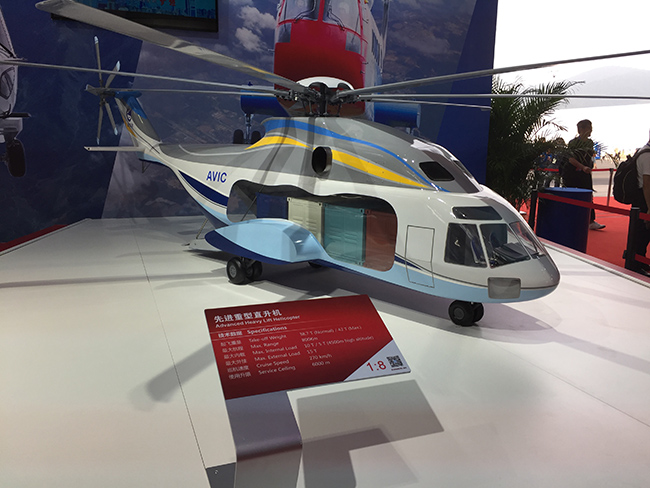
There is an intergovernmental agreement between the Russian Federation and the PRC on the creation of a heavy helicopter. On the Russian side, this document has passed all approvals at the state level and entered into force. Similar procedures are happening with the Chinese colleagues. We have completed the entire technical part and are close to completing the financial, economic and legal part. This is not only a question of pricing, but also questions of the payment structure, amounts of advance payments, guarantees, etc. There is already a discussion of technical nuances, based on the internal requirements of each state. Everyone has their own nuances, requirements, rules. There is a harmonisation of the conditions of the future contract with certain rules in the Russian Federation and the PRC. Once again, we work not on a joint project, but as a performer - the customer orders from us, we perform.
- In China, a fairly large fleet of helicopters is still Soviet-Russian production. Are there any changes in maintenance and repair? Have there been discussed any projects for the modernisation of the fleet in China?
- We are in very close cooperation with our Chinese colleagues about the fleet of previously installed helicopters at various levels, both civil and military. We have a significant interaction in the supply of aviation parts and aviation property. We are open to after sales service cooperation. Due to the fact that Mi-171E helicopters were mainly delivered to the PRC, and the fleet is significant, it is possible to build a good after-sales business on its basis. The question is how the Ministry of Defence of China is going to look at it. If for them it is a certain moment of business, then this is one story, and if it is of national interest, then ... Now they simply buy spare parts, aviation equipment and service helicopters on their own.
- Recalling the recent history of the painful rupture of cooperation ties with Ukraine, I would like to ask about how things are going with the provision of your programs with helicopter engines today? How do you feel about the possible use of Chinese engines and components on Russian helicopters?
- We have a national manufacturer, which actively interacts with us. The current level of cooperation and the prospects for the JDC fully satisfy us. Yes, indeed, today we don’t install domestic engines on the entire helicopter fleet. Canadian Pratt&Whitney engine is installed on Ansat, French engines are put on Ka-62 and Ka-226. But it certainly does not limit us in cooperation with the UEC, with which there is a joint program for the development of engines for our current and future fleet. We are all in the same aviation cluster, at Rostec, and at this level there is a harmonisation of approaches. We equally perceive each other’s strategic performance. The UEC today has a large amount of aircraft-related programs, with ground histories, with the VK-2500 helicopter base engine, which replaced the TV3-117. The nearest prospect is the import substitution of the D-136 engine for the Mi-26 based on PD-14 - PD-12V. We are also actively discussing with our colleagues engines that can go for promising versions of Ansat, Ka-62, Ka-226, including the helicopter VRT-500 (a promising light helicopter).
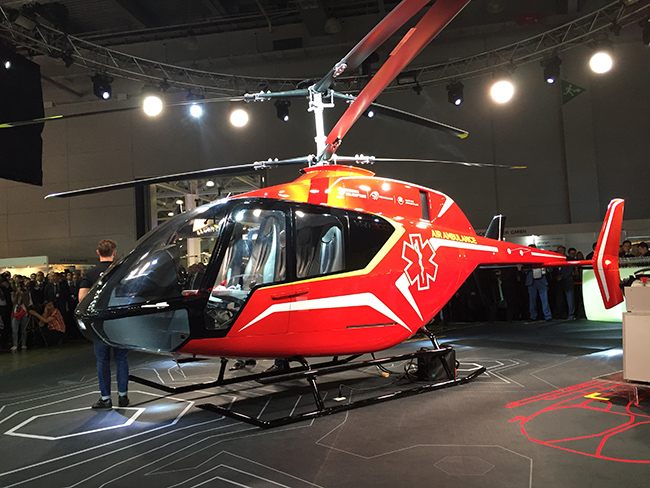
As for the Chinese components, depending on the region in which we deliver the machines, we are open to industrial cooperation with enterprises in this region. We are well aware that many colleagues are talking about localisation, when the customer is the state in the person of one or another executive body, then we can talk about offset. We are open to cooperation with companies and on engines and avionics. The only question is that the products of these companies comply with the standards and certification requirements. But when we talk about a commercial order, it is hardly discussed.
- At the airshow in Zhuhai, for the first time in many years, two domestic helicopters took part in the flight program: the Ansat and the Mi-171A2. For a long time Russian helicopters have not been so actively shown on foreign sites.
- Our task is to work for the long term. This show was held as part of a demo tour of the countries of the region. Our team has carefully prepared for this action, in which everything was involved, starting with the engineering staff and ending with the sales team. We are committed to receiving orders. Customers may be different, depending on the countries. Somewhere there are private civil helicopter companies, somewhere civil helicopters are operated by various military or government organisations: border guards, police, rescue service ... For example, in some countries, the functions of medical evacuation lie on the shoulders of defence ministries, despite that they use civilian helicopters. Therefore, we are just looking at who and how to interact. The purpose of such demo tours is to show people helicopters live, gather soft contacts, organise interaction with those individuals or companies that we do not yet know. Not everyone can come to this or that global exhibition platform, so we are trying to be closer to the potential consumer.
Editor’s note: In November 2018, two Ansat and Mi-171A2 helicopters took part in the demonstration tour of the Russian Helicopters holding company in a number of countries in South-East Asia - Vietnam, Cambodia, Thailand and Malaysia. Also, the helicopters were demonstrated in the flight program of the airshow in Zhuhai, People's Republic of China. Following the demo tour, a number of contracts for the supply of helicopters to the countries of the region were signed.
photo by author












